Information
High-rank tomb of East Wu Dynasty was found in Anhui
Summary: High-rank tomb of East Wu Dynasty was found in AnhuiFrom:Chinese ArchaeologyWriter:Date:2017-05-23“The son of heaven tomb” was situated in Dongyang Village Gushu Town Dangtu County, Anhui Province. According to historic records and folk lore, it is Dingli
High-rank tomb of East Wu Dynasty was found in Anhui
From:Chinese Archaeology Writer: Date:2017-05-23
“The son of heaven tomb” was situated in Dongyang Village Gushu Town Dangtu County, Anhui Province. According to historic records and folk lore, it is Dingling mausoleum, which belonged to Sun Xiu, Jing Emperor of Wu State. It dated back to the later period of East Wu Dynasty. The funeral objects were made of fastidious material and in exquisite style, representing the highest technique of the same period. The number and type of the unearthed carriage and horse decors rank first among all the major East Wu Dynasty tombs. Based on historic records and unearthed objects, the tomb was speculated to be royal tomb for kings and upper social stratum. It is possible that the tomb belonged to Sun Xiu, the Jing Emperor of Wu State and Lady Zhu.
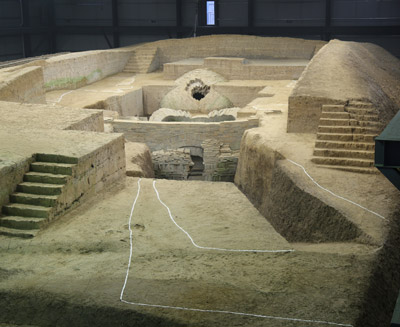
The shape and structure of the tomb
The excavation showed that it was a four-corner up dome-top brick chamber tomb, including the pit, chamber, filling and mound. The slope passage consists of the first passage and the second passage, with the horizontal length from the entrance at 13.9 meters and 13.3 meters. The chamber was 15.4 meters in length, which made up of sealed door wall, tomb gate, earth-retaining wall, vaulted passage, front chamber, left and right side chambers as well as back chamber. There were first sealed door and second sealed door corresponding to the first passage and second passage. The inside width and height of the tomb door was respectively 2.5 meters and 2.25 meters. There was a three-layer dome.
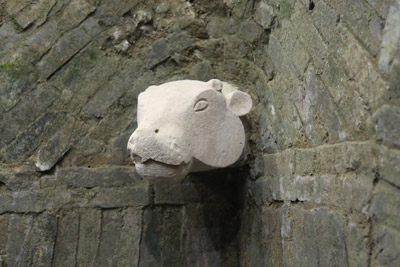
Funeral objects
There are altogether 181 pieces (sets) funeral objects, including lacquered wooden ornamental objects, female accessories, carriage and horse decors, weapons, daily commodity, Buddha sculptures, figurines, legendary animals as well as coins, varying from gold, silver, copper, iron, pottery, porcelain, stone, glaze, glass to lacquer. The theme is mainly about Daoist longevity and immortalization as well as early Buddhist ideology.
Date of the tomb
The tomb was speculated to be in the later period of East Wu Dynasty through comparison of the tomb shape, structure and unearthed celadon and pottery with those of contemporary tombs in South Jiangsu, Hubei and Jiangxi. A piece of lacquer ware with li calligraphy unearthed read “Third year in Yong’an reign”. Besides, two script tomb bricks read “Fourth year in Yong’an reign”. Yong’an was the only reign title used by Sun Xiu (Emperor Jing of Wu State), Sun Xiu was in power from the first year to the seventh year of Yong’an reign (258 to 264 A.D.). The above discovery showed that the construction time of this tomb was the fourth year of Yong’an Period or soon after that.
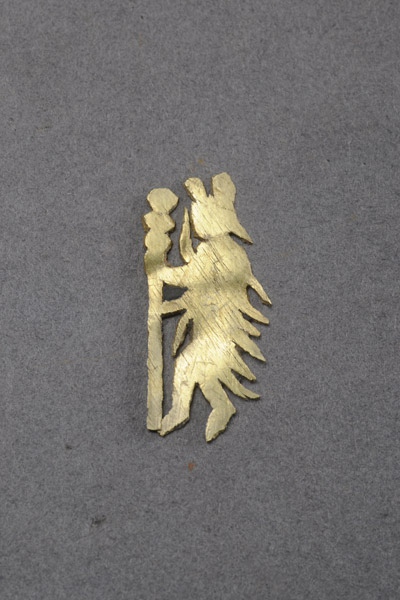
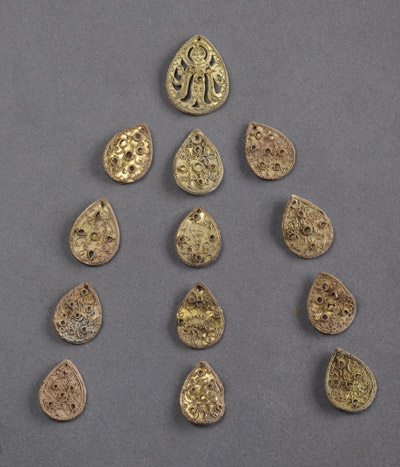
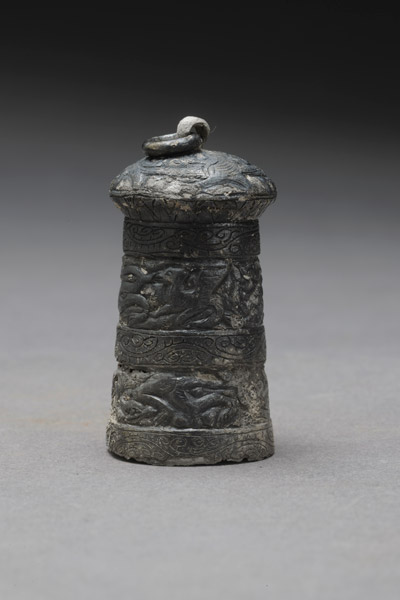
Tomb Grade and identity of the tomb owner
The dome front-back chamber was the highest-rank tomb structure in East Wu Dynasty. Till now, only two tombs of this kind were found and the other was Shang fang large-scale tomb in Jiangning, Nanjing. The closest counterpart in the north Wei State was Cao Cao mausoleum, also known as the Gaoling in Xigaoxue, Anyang. This tomb was inferior to Shangfang large-scale tomb and superior to Gaoling in scale.
The funeral objects were made of fastidious material and in exquisite style, representing the highest technique of the same period. The number and type of the unearthed cart and horse parts rank first among all the major East Wu Dynasty tombs.
As to the identity of the tomb owner, the indirect evidences pointing to Sunxiu (Emperor Jing of Wu Dynasty) and Lady Zhu were listed as follows: firstly, the location coincided with historical records; secondly, the li calligraphy on the lacquer ware records of “eight pieces of seven-inch iron mirrors” matched with the rank of empress Zhu; thirdly, the tomb and related remains coincided with the historic recording of the burial process of Sunxiu and Lady Zhu. The discovery of the second passage and the second sealed door showed that the tomb owners were buried separately, which coincided with the special history records that Sunxiu died and the next year empress Zhu was forced to die and joint-buried with Jing Emperor. Besides, there were dragon decorating objects for male as well as gold filigree hairpin and golden flowers for female among the funeral objects.
In a word, we speculate that the tomb was royal tomb for kings or upper grade. It is possible that the tomb belonged to Sunxiu, the Jing Emperor of Wu State and Lady Zhu.(Translator: Yuan Yuan)

The shape and structure of the tomb
The excavation showed that it was a four-corner up dome-top brick chamber tomb, including the pit, chamber, filling and mound. The slope passage consists of the first passage and the second passage, with the horizontal length from the entrance at 13.9 meters and 13.3 meters. The chamber was 15.4 meters in length, which made up of sealed door wall, tomb gate, earth-retaining wall, vaulted passage, front chamber, left and right side chambers as well as back chamber. There were first sealed door and second sealed door corresponding to the first passage and second passage. The inside width and height of the tomb door was respectively 2.5 meters and 2.25 meters. There was a three-layer dome.

Funeral objects
There are altogether 181 pieces (sets) funeral objects, including lacquered wooden ornamental objects, female accessories, carriage and horse decors, weapons, daily commodity, Buddha sculptures, figurines, legendary animals as well as coins, varying from gold, silver, copper, iron, pottery, porcelain, stone, glaze, glass to lacquer. The theme is mainly about Daoist longevity and immortalization as well as early Buddhist ideology.
Date of the tomb
The tomb was speculated to be in the later period of East Wu Dynasty through comparison of the tomb shape, structure and unearthed celadon and pottery with those of contemporary tombs in South Jiangsu, Hubei and Jiangxi. A piece of lacquer ware with li calligraphy unearthed read “Third year in Yong’an reign”. Besides, two script tomb bricks read “Fourth year in Yong’an reign”. Yong’an was the only reign title used by Sun Xiu (Emperor Jing of Wu State), Sun Xiu was in power from the first year to the seventh year of Yong’an reign (258 to 264 A.D.). The above discovery showed that the construction time of this tomb was the fourth year of Yong’an Period or soon after that.



The dome front-back chamber was the highest-rank tomb structure in East Wu Dynasty. Till now, only two tombs of this kind were found and the other was Shang fang large-scale tomb in Jiangning, Nanjing. The closest counterpart in the north Wei State was Cao Cao mausoleum, also known as the Gaoling in Xigaoxue, Anyang. This tomb was inferior to Shangfang large-scale tomb and superior to Gaoling in scale.
The funeral objects were made of fastidious material and in exquisite style, representing the highest technique of the same period. The number and type of the unearthed cart and horse parts rank first among all the major East Wu Dynasty tombs.
As to the identity of the tomb owner, the indirect evidences pointing to Sunxiu (Emperor Jing of Wu Dynasty) and Lady Zhu were listed as follows: firstly, the location coincided with historical records; secondly, the li calligraphy on the lacquer ware records of “eight pieces of seven-inch iron mirrors” matched with the rank of empress Zhu; thirdly, the tomb and related remains coincided with the historic recording of the burial process of Sunxiu and Lady Zhu. The discovery of the second passage and the second sealed door showed that the tomb owners were buried separately, which coincided with the special history records that Sunxiu died and the next year empress Zhu was forced to die and joint-buried with Jing Emperor. Besides, there were dragon decorating objects for male as well as gold filigree hairpin and golden flowers for female among the funeral objects.
In a word, we speculate that the tomb was royal tomb for kings or upper grade. It is possible that the tomb belonged to Sunxiu, the Jing Emperor of Wu State and Lady Zhu.(Translator: Yuan Yuan)
Category: English
News
Information
Key words:
